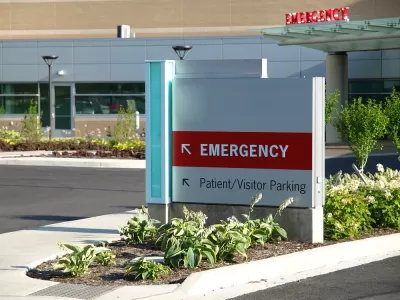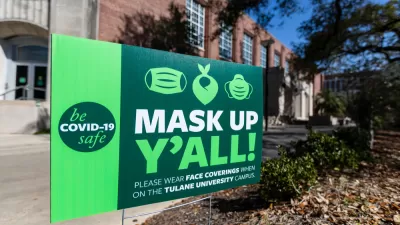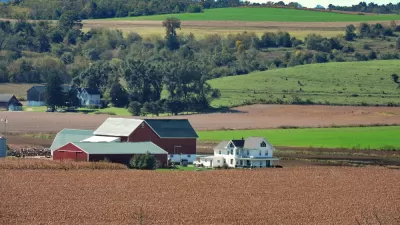Ventilator availability is a major indicator for states in the South and West that are seeing record hospitalizations, but in New York, where Gov. Cuomo announced that New York City had moved to Phase III of reopening, the topic was ventilation.

Gov. Andrew Cuomo (D-N.Y.), who made famous the term, "ventilators, ventilators, ventilators" during the pandemic's first weeks in New York City in late March and April, included the issue of airborne transmission of the virus in his 24-minute press briefing (source article with video) on Monday, July 6. But first, he urged President Trump to wear a mask and added a few other critical comments.
Aerosol transmission
Cuomo addressed the issue of airborne transmission of the virus that was raised by hundreds of scientists in an open letter to the World Health Organization. The "outlined the evidence showing that smaller particles can infect people, and are calling for the agency to revise its recommendations," reports Apoorva Mandavilli, science and global health for The New York Times on July 7.
If airborne transmission is a significant factor in the pandemic, especially in crowded spaces with poor ventilation, the consequences for containment will be significant.
Ventilation systems in schools, nursing homes, residences and businesses may need to minimize recirculating air and add powerful new filters. Ultraviolet lights may be needed to kill viral particles floating in tiny droplets indoors.
"It’s unclear how often the virus is spread via these tiny droplets, or aerosols, compared with larger droplets that are expelled when a sick person coughs or sneezes, or transmitted through contact with contaminated surfaces, said Linsey Marr, an aerosol expert at Virginia Tech, reported Mandavilli on July 6. Rather than dropping to surfaces, the virus, expelled from simply talking as aerosols, can remain airborne for up to two hours, claim the scientists.
Cuomo wants this problem addressed with new building standards. From the transcript of the press briefing:
On the COVID transmission, following the facts...There's less concern about surface area transmission, more data that it is primarily an airborne transmission. That then raises the question of what can we do with air filtration technology. In here this is an air conditioned building, it's bring air up into the HVAC system, it then runs through the HVAC system and gets recirculated. What kind of filtration can you have on the HVAC system that may be capable of catching the virus as it's attached to the droplets?
We're spending time on it because I think there's a real possibility that we could actually have a positive contribution here.
Ventilators and hospitalizations: New York, Arizona, Miami-Dade County, Arizona, California
Cuomo also announced, "Total number of hospitalizations, 817. That is the lowest number since March 18."
in Arizona, The Washington Post reports on July 7 that "[m]ore than 3,300 people were hospitalized, an increase of 144 since Monday, with nearly 870 [intensive care unit ICU patients and more than 540 people on ventilators, according to the Arizona Department of Health Services."
Florida does not release the number of current Covid-19 patients in the state, only the percentage of available hospital beds and intensive care unit beds. Miami-Dade County, the most populous and hardest-hit county in the state, "has seen a staggering increase in the number of Covid-19 patients being hospitalized (88%), in the number of ICU beds being used (114%) and in the use of ventilators (119%) over the past 13 days, according to the latest data released by Miami-Dade County Government," reported CNN on July 6.
"Texas surged past 8,000 statewide hospitalizations for the first time over the long holiday weekend -- a more than quadruple increase on the past month," reports NBC-Dallas Fort Worth. "On Tuesday, the number of hospitalizations soared past 9,000."
In California on July 5, "there were 5,790 people hospitalized with confirmed coronavirus infections. That’s an 88% increase from that number on June 5, when there were 3,072 hospitalized," notes a comment below the earlier post on the states surging infections.
Related in Planetizen:
-
Pandemic Reversal: The New Tri-State Quarantine, June 25, 2020
-
New York City Reopens Today. How Will People Travel? June 8, 2020
-
The High Cost of Cool Air, September 14, 2019
-
Seattle Clean-Air Shelters to Provide Relief to Residents, July 16, 2019

Trump Administration Could Effectively End Housing Voucher Program
Federal officials are eyeing major cuts to the Section 8 program that helps millions of low-income households pay rent.

Planetizen Federal Action Tracker
A weekly monitor of how Trump’s orders and actions are impacting planners and planning in America.

Ken Jennings Launches Transit Web Series
The Jeopardy champ wants you to ride public transit.

Milwaukee Road to Get Complete Streets Upgrades
The city will reduce vehicle lanes and build a protected multi-use trail including bioswales and other water retention features on its ‘secret highway.’

Tackling Soil Contamination With Nature-Based Solutions
Los Angeles County residents and experts are turning to nature-based methods like bioremediation to address long-standing and fire-exacerbated soil contamination without resorting to costly and disruptive removal.

Rebuilding Smarter: How LA County Is Guiding Fire-Ravaged Communities Toward Resilience
Los Angeles County is leading a coordinated effort to help fire-impacted communities rebuild with resilience by providing recovery resources, promoting fire-wise design, and aligning reconstruction with broader sustainability and climate goals.
Urban Design for Planners 1: Software Tools
This six-course series explores essential urban design concepts using open source software and equips planners with the tools they need to participate fully in the urban design process.
Planning for Universal Design
Learn the tools for implementing Universal Design in planning regulations.
Ada County Highway District
Clanton & Associates, Inc.
Jessamine County Fiscal Court
Institute for Housing and Urban Development Studies (IHS)
City of Grandview
Harvard GSD Executive Education
Toledo-Lucas County Plan Commissions
Salt Lake City
NYU Wagner Graduate School of Public Service





























